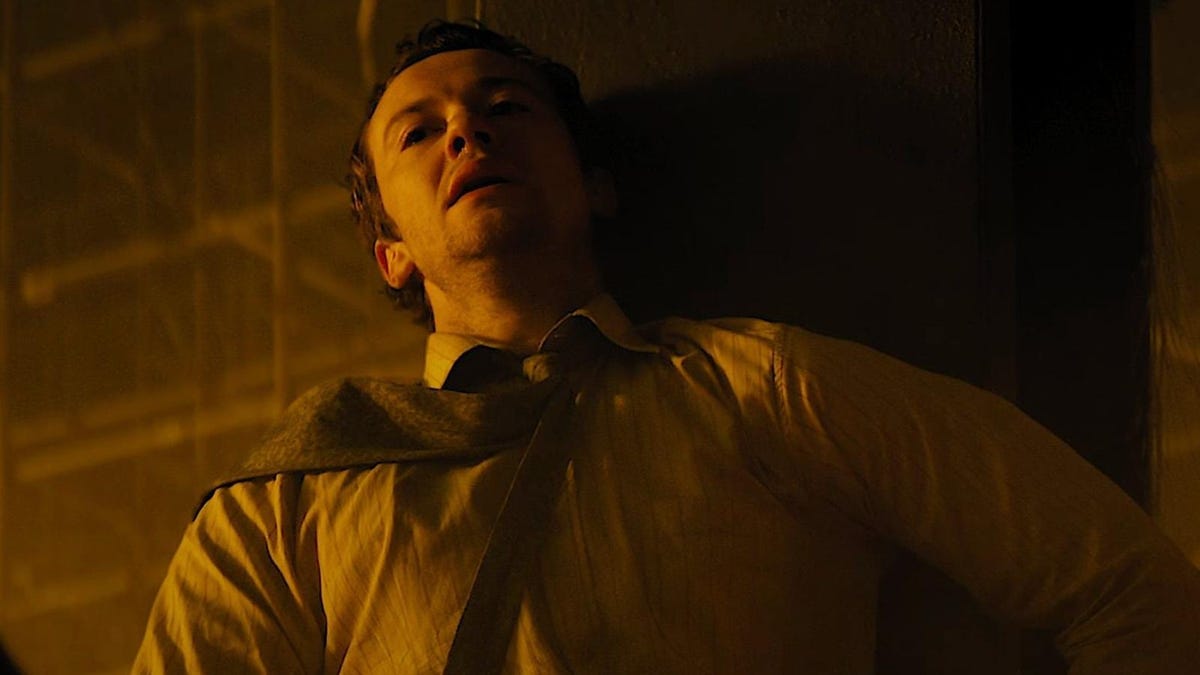Adorable ‘Porg’ Pterosaur Flapped Above Jurassic China


As the sun sets over what will become northern China in 160 million years, something small dives between the trunks of tree ferns, intercepting a dragonfly mid-flight. It lands in the canopy to gulp down its squirming prize. The big-eyed, arrestingly cute critter is a newly described species of pterosaur named Sinomacrops bondei, apparently evolution’s answer to the question, “what if frog, but also bat, but also dragon?”
The animal is a far cry from its more conspicuous, beaky cousins that once cast massive shadows over the Mesozoic landscape. Sinomacrops was only about the size of a sparrow and was more of a winged, pug-faced muppet than a ferocious sky beast. But the little gremlin was a pterosaur nonetheless. Sinomacrops and its close relatives—the anurognathids—were an odd evolutionary experiment in being a very different kind of pterosaur.

An international team of researchers centered mostly in China and Japan examined a fossilized, crushed skeleton found in rock in China’s Hubei Province. With the aid of specialized x-ray imaging, the team was able to figure out how the long-extinct flyer was put together, identifying it as a new genus and species of pterosaur and describing it in the journal PeerJ.
Many later pterosaurs were terrifying, otherworldly, dinosaur-gobbling storks the size of giraffes, but anurognathids like Sinomacrops had the bearing and physique of a chicken nugget. Its little body was kept aloft with a pair of broad, membranous wings, terminating in a thin tail that trailed between a wee pair of feet. The creature sported huge eyes peering out from a rounded, wide-mouthed face.
G/O Media may get a commission
Sinomacrops was also likely furry. Well, fuzzy at least. Anurognathids and many other pterosaur groups appear to have had a pelt of tufted “pycnofibers,” a type of insulating integument that wasn’t hair or feathers, but a totally different and independently evolved type of covering.
In some other anurognathid species, these hair-like structures formed bristles ringing the mouth, similar to the long bristles that birds like nightjars have bordering their beaks. Such bristles might effectively augment the birds’ already impressive gape, helping funnel flying insects into their toothy Pac Man mouths. With their giant eyes, anurognathids are thought to have been the Jurassic’s version of nightjars or bats, snatching up insects in low-light conditions. Sinomacrops was basically a fuzzy missile made of eyes and mouth, propelled by a hunger for bugs.
Megan Jacobs, a paleontologist at Baylor University in Texas not involved with this research, said the finding is pretty exciting. Pterosaur fossils are particularly rare, since their thin, hollow bones adapted for flight didn’t preserve as readily as bones from other animals. But the new species is especially interesting because anurognathids, as a group, are known from very limited fossil material. Sinomacrops can help scientists build a better picture of what these creatures were like.
She’s also surprised by the shape of Sinomacrops’ head. “It’s very round with large, forward facing eyes. Most pterosaurs of this period have elongated snouts full of little teeth.”
Jacobs likens the new pterosaur to the porgs from Star Wars: The Last Jedi, a striking resemblance she’s not alone in noticing.
The fossil is particularly interesting, according to Jacobs, because it comes from the Late Jurassic—a period when pterosaurs were really starting to diversify and evolve into the myriad of unusual forms they took by the end of the Cretaceous. “Finding these early pterosaurs really gives us an insight into how they started to adapt and alter aspects of their skeleton,” explained Jacobs.






